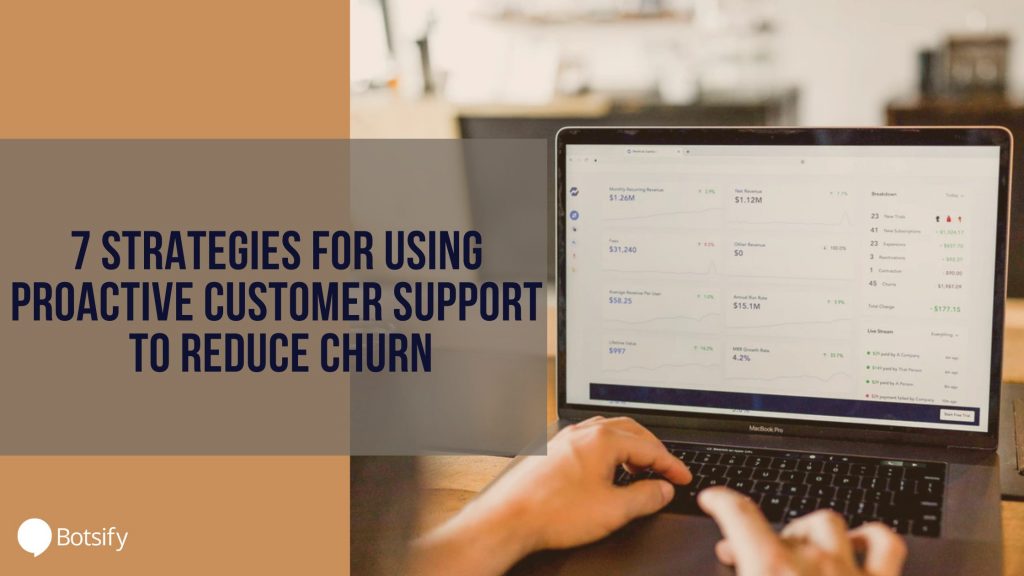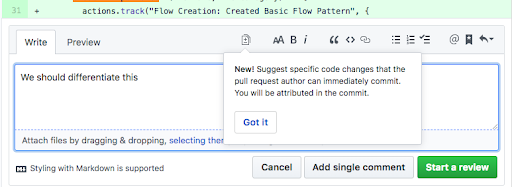Customer churn is every business’ hard reality–you cannot escape it, but you can reduce it. How? Well, with the right set of tools, strategies, and technologies to start with. If you’re still on the fence about why you should laser-focus on lowering the churn rate, consider the following statistics that act as a real eye-opener:
- Unhappy customers can be fatal for your brand: According to PWC, 32% of the people will stop doing business with a brand/company they previously loved, after just one negative experience.
- Huge losses: Another study suggests that avoidable customer churn is costing U.S. businesses $136 billion a year.
- No turning back: Finally, further research claims that just one in 26 customers makes a complaint when they are unhappy. This means that all the others churn without saying a word or providing customer feedback.
The writing is on the wall: Preventing churn and actively working on enhancing the customer experience can not only boost your bottom line but also lead to happier, more loyal customers.
Top-7 Proven Ways to Lower Churn via Proactive Customer Support
- Proactively ask ‘why’ your customers are churning: This sounds like an obvious suggestion, but most companies don’t invest enough time, effort, and resources into understanding why their customers are switching their loyalties and moving on–a big mistake.
So every time a customer hits the ‘Unsubscribe’ or ‘Cancel’ button, directly ask them why they’re choosing to move on. You could send a short-and-relevant survey as shown below:
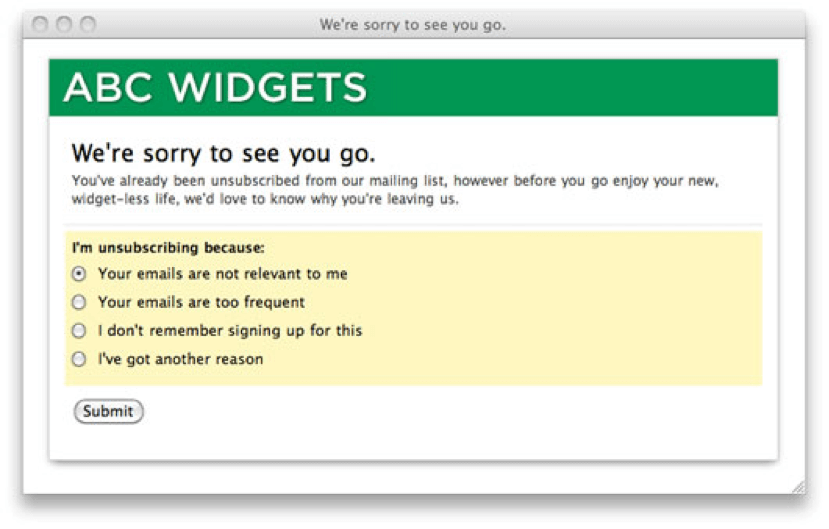
Or you can send a subtle email asking customers to ‘Restart their membership’ as Netflix demonstrates below:

The takeaway: Instead of playing guesswork or going with your gut, understand why your customers are jumping ship–straight from the horse’s mouth. You can use the invaluable insights gained to improve your product or service, depending on where the issue lies in the first place.
- Invest in a robust live chat tool for instant support: Did you know that according to industry estimates, the live chat software market will be worth $987.3 million by 2023? If you want to immediately and effectively boost the customer satisfaction rate, invest in live chat software for your website, as Modcloth demonstrates below:

There are numerous advantages to integrating live chat software within your website:
- It accelerates the speed of service and improves the user satisfaction rate, as eMarketer indicates that around 63% of customers are more likely to return to a website that has a live chat.
- It empowers customers to instantly and conveniently get in touch with the brand and seek answers to their issues at (literally) the click of a button.
- It enables the brand to build a long-term relationship with the user, assisting and guiding users at every point in the user journey.
- Finally, the icing on the cake, research indicates that adding live chat to your website can improve conversions by 12%.
The takeaway: Consider live chat as the primary support channel for real-time communication and retaining customers. Why? Because love speed, instant service, and accurate solutions–all of which can be achieved easily with proactive customer support.
- Revisit your onboarding process to deliver a relevant user experience: One of the golden rules of proactive support lies in helping customers to find value with your product/service as quickly as possible. This is why paying special attention to your onboarding process is key.
To improve your onboarding process, here are a few best practices to keep in mind:
- Understand who your ideal target audience is so that you can tailor your onboarding process accordingly.
- Brainstorm and zero in on a single workflow–one that effectively showcases your product’s core value. You can use this as the foundation on which to onboard users and guide them through the onboarding journey as MyFitnessPal demonstrates below:
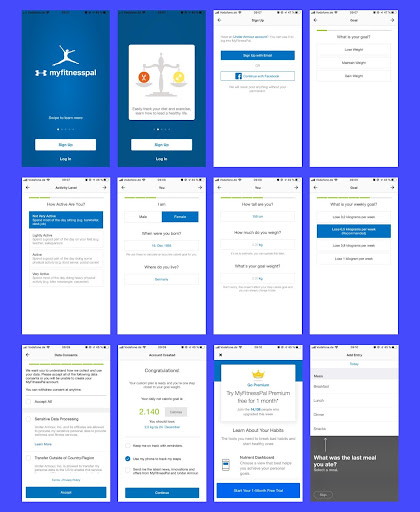
- Whatever you do, make sure to keep your product tour short, relevant, and to the point. You don’t want to overwhelm the users with unnecessary information. Take a cue from Flipboard’s onboarding journey for inspiration:
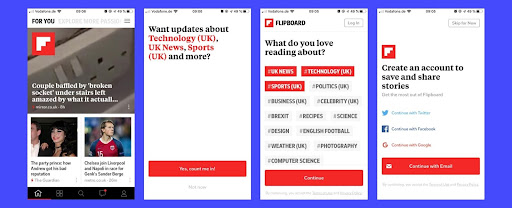
- Gather data and A/B test onboarding design versions to understand how you can logically and strategically guide users to take specific actions throughout the onboarding journey.
- Keep updating and optimizing your content and design to ensure that the user understands the benefits they can extract from the product front-and-center.
- Ensure a seamless and clear line of communication at all times–understand what’s working (and not working) for the user, use the right tools to gather real-time feedback, and offer consistent support as well as follow up every chance you get.
The takeaway: Your onboarding process, if done right, can allow the customer to find value or experience the ‘aha! moment’ as early as possible. This boosts up the chances of retention and encourages customers to build a strong connection with your offering from the get-go.
- Get proactive with a hyper-personalized welcome email: Think of this strategy as creating a lasting first impression. You can use intuitive ‘smart’ tools to create a series of time-based and/or trigger-based emails, depending on where the user is in the onboarding or the buyer’s journey.
Here’s an excellent example of a personalized welcome email by Clearbit that builds trust with new subscribers, reminds users about the product and its features, and clearly outlines the next steps so that there is no confusion:
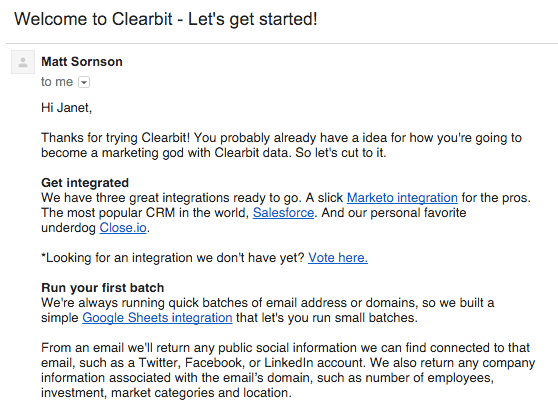
To that end, here are a few welcome email best-practices you can follow to keep the users engaged and entertained:
- Never send emails from a no-reply email–it lets the customer feel that your brand is highly unapproachable.
- Always demonstrate the benefits and advantages that customers are most likely to get from using your product instead of simply bulleting a series of product features (boring).
- Ask for their feedback on how their journey with your brand has been so far and reward as well as thank users for taking the time to provide their suggestions and opinion.
The takeaway: When extending any kind of customer support, keep in mind two key factors–personalization and proactiveness–and you’re golden. In the end, you want your customers to feel welcome (and grateful) by the brand.
- Use tooltips to combat ‘feature blindness:’
Getting users to try new features can be tricky. After all, customers end up building habits around your product as they use it more and more to address specific wants and needs. This is why you need the help of features such as tooltips and hotspots to encourage users to try new features as Github does:
The takeaway: Extending proactive support, in any form, is all about preempting the user’s wants and needs and undertaking certain measures and steps to guide users to accept a new way of working with respect to your product. This can easily be done by using tooltips.
- Celebrate customer successes at every juncture: This strategy works wonders in lighting a renewed sense of excitement and wonder with respect to your product–especially if the user has managed to stick it out for long. Plus, it lets the users know that you’re truly and actively listening to their needs, and working on their requirements.
For instance, to tackle the issue of monotony, you can send celebratory emails, texts, and messages to users as they cross important milestones with your product. As an example, consider what YouTube does when a user passes 100 subscribers:
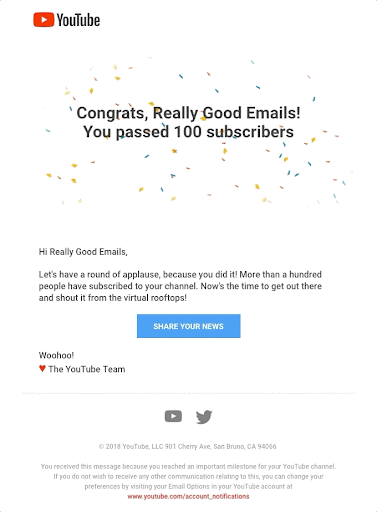
The takeaway: Celebrating your customers paves the way for long-term loyalty, adds a more human touch to your communication strategy, and helps build a rock-solid relationship with the customer as the latter feels appreciated and honored by the brand–a winning combination for retaining customers.
- Proactive support is the future: Whether it’s tackling the issue of inactive customers or addressing the needs of at-risk users, the learning is this: Customers demand proactive support from brands. It is no longer sufficient to provide reactive support; customers want proactiveness. They want the brands to take the first step. They want immediacy, particularly when it comes to responding to social media posts. JetBlue Airways is an excellent example of this:
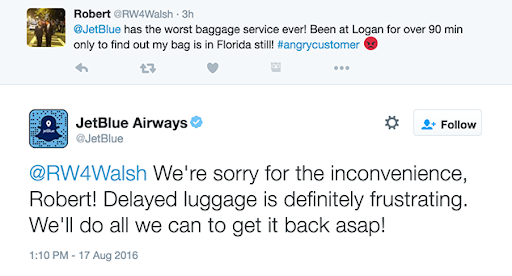
The takeaway: Providing proactive support allows customers to build a relationship with your brand, not a specific product in particular. So if you want to leverage the benefits of a huge loyal fan base, you need to walk the extra mile and wow users–when they’re least expecting it.
The Bottom Line
The six strategies outlined above work because of two reasons. One, because these strategies address the root cause of why customers might be churning, making it sustainable. And two, because they provide a permanent fix to the problem and offer impactful results. So you might not be able to bring the churn rate to zero percent (an unrealistic expectation) but you will be able to lower it enough to see long-term growth and success.

